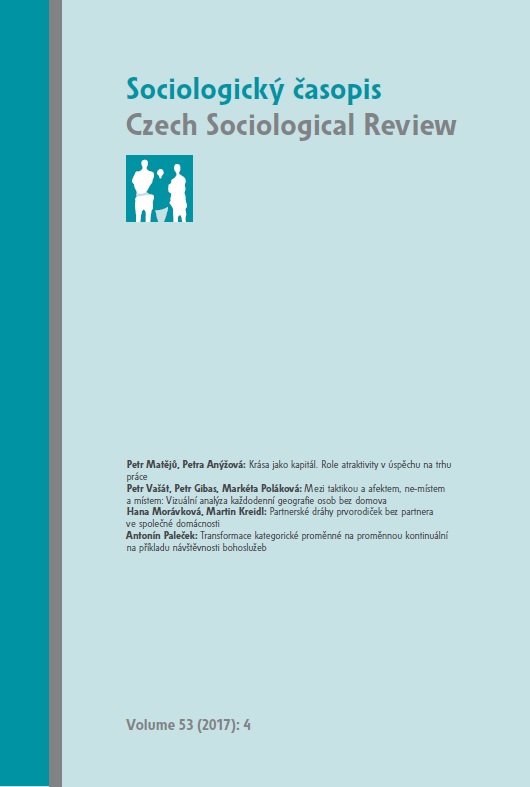Krása jako kapitál: Role atraktivity v úspěchu na trhu práce
Beauty Capital: The Role of Attractiveness in the Labour Market
Author(s): Petr Matějů, Petra AnýžováSubject(s): Gender Studies, Applied Sociology, Demography and human biology, Human Resources in Economy
Published by: AV ČR - Akademie věd České republiky - Sociologický ústav
Keywords: attractiveness; human capital; skills; education; labour market outcomes; gender gaps; structural modelling
Summary/Abstract: The main objective of the paper is threefold: first, to examine the role of physical attractiveness in the labour market in the broader context of economic and sociological theory; second, to assess gender differences in returns to beauty; and third, to show that the empirical evidence on gender differences in returns to beauty that has to date prevailingly come from North America cannot be applied to Europe without further examination. We use data from the first large-scale sociological survey focusing on physical attractiveness carried out in Europe and in particular from the follow-up to the Czech national survey of adult competencies (PIAAC). First, using structural modelling to identify differences in how men and women transform family background, formal education, competencies, socio-economic status of occupation and physical attractiveness into income, we found strong evidence in support of the hypothesis that, in general, physically more attractive people have better chance of obtaining a higher socio-economic status occupations, and higher incomes than less attractive people, but the causalities are different for men and women. Second, replicating the linear regression models applied to North American data we assessed the differences in returns to beauty between Czech men and women and found that, unlike in North America, in the Czech Republic the income premium for beauty is markedly higher among women than men, while men capitalise on their attractiveness more in the area of occupational status. We conclude that while returns to beauty are culturally universal, gender differences in these returns are culturally specific.
Journal: Sociologický časopis / Czech Sociological Review
- Issue Year: 53/2017
- Issue No: 04
- Page Range: 503-531
- Page Count: 29
- Language: Czech

